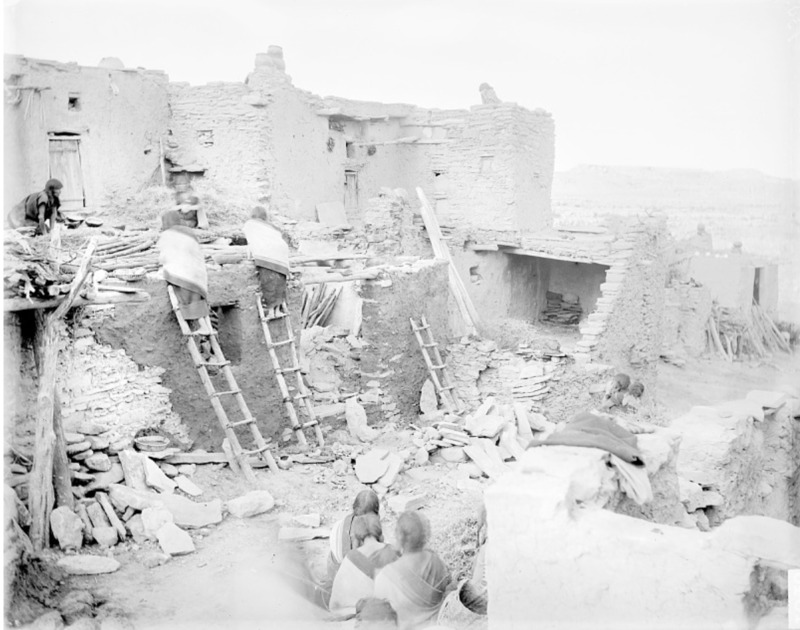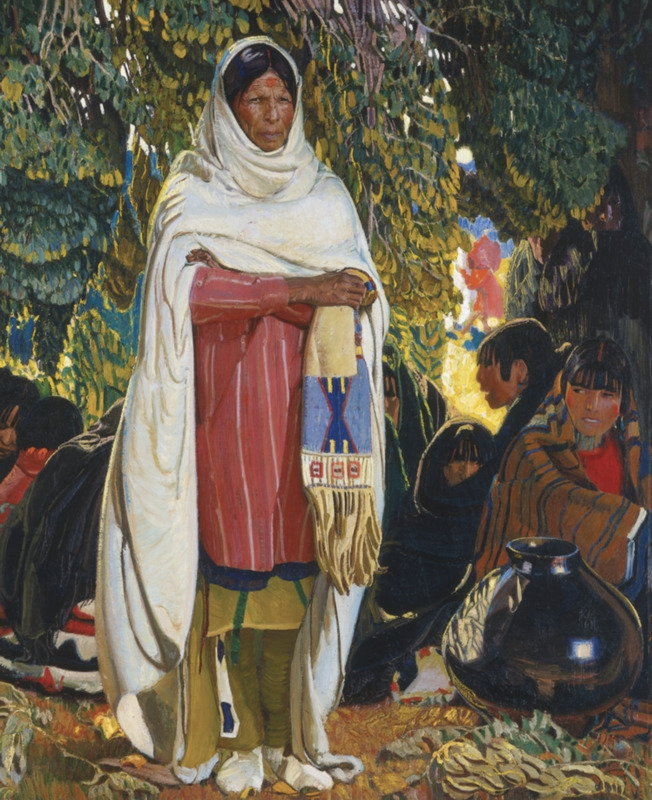Pueblo Women
Indigenous American Women hold many significant roles in their society. As seen in this picture where several Pueblo women are adding an extra layer of brush to the roofs of their homes and several others are tending to children of the tribe, often common roles of the women within the tribe. Pueblo women also had other significant roles as providers for their tribes by farming, harvesting, and storing the crop such as wheat. They used a process called winnowing, which separated the grain form the chaff and removed any pest allowing the grain to be stored. Pueblo women contributed to the tribal economy by making pottery and other items that could be sold or traded. The division of labor in tribal society's shown by the responsibilities of the Pueblo men and women and how both genders equally contributed. The labor-intensive jobs were not only the responsibility of the men and this created equality and unity within the Pueblo tribe.
This picture is a canvas painting from 1922 by Ernest l. Blumenschein called “The Gift”. This painting was constructed at a time when Native Americans culture was coming under intense political scrutiny and was painted as a form of resistance to the United States continuous attempts to civilize Native Americans. Although this painting seems very straight forward it has immense amounts of symbolism. The main figure, which is a Native American chief by his wardrobe, but has features of a native American woman. The use of this shift and interpretation of the image was used to defy cultural norms of what Europeans deemed roles of women should be. It also highlights the softness of Native Americans contrary to the widespread belief that portrayed by stong “Aggressive” looking Indian men. This form of resistance was more subtle and remarkably effective in creating a new image for Native Americans to resist “Civilization” that was being forced upon them.


